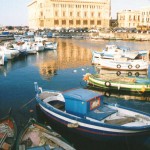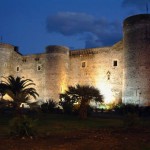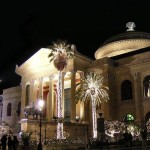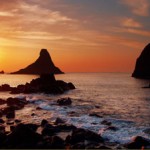Trapani can be considered the ugly duckling among the major cities of Sicily. It is really different from the majesty of Palermo, the beauty of Catania or the elegance of Syracuse. However, after all, Trapani deserves to be known in order to agree or not with this definition.
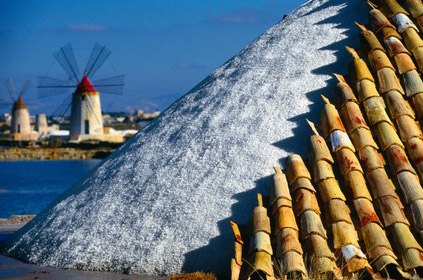
The city is famous for the salt mines and the “Our Lady of Sorrows” religious procession. Its ancient name was Drepanon, so called by the Greeks for the sickle-shaped peninsula where the city lies. Trapani keeps in its winding streets – lined with buildings with baroque facades – the essence of an Island conquered by many peoples. It was an important Phoenician port, then conquered by the Romans, the Vandals, the Byzantines and finally the Arabs. By the ninth century under the Arab rule the importance of the maritime activity of Trapani grew thanks to the presence of goldsmiths and coral artists. The Arab influence was so great that local cuisine still reflects it in its typical dishes. Conquered by the Normans in 1077, Trapani received a so great economic impetus from the Aragonese people thanks to the trade of salt, coral and tuna that the city became a crossing point for the Crusaders. After the victory of Tunis the Emperor Carlo V visited the city and provided it with a new defensive system. Even if Trapani became the Capital city of the province in 1817, it lost the glory of the past.
Coming from the highway that links the city to Palermo, you will enter the periphery leading to the centre of the city. Both the Sanctuary of the Annunciation and the Pepoli Museum deserve your visit. The saltpans stretch from Trapani to Marsala. The extraction of salt has endowed this area with a differentiating factor that has determined economic, social and landscape dealings between the province of Trapani and the surrounding area.
Trapani Salt Pans
The itinerary called “via del sale” (the salt route) is famous for its irregular succession of mills and you will seem to be inside a tale by Cervantes. The terracotta tiles that you will see as protection of the salt seem blankets. In Nubia, in the Paceco salt pans area, you can visit the salt museum inside an old mill. Its simplicity contrasts with the long explanation (in Italian) of the touristic guide, which explains to tourists both the old and the new systems of the salt extraction, the “magic” properties of the salt applied to medicine or gastronomy and the economic importance of the salt pans of Trapani in the Mediterranean sea until the decay due to the unproductiveness and to the competition with the salt pans of Cagliari (in the Sardinia region).
Nowadays processes are still performed by hand, producing a high quality salt, sold for a high price. The salt pans are pink coloured and seem herds grazing under the control of old windmills, whose blades, although not turning, keep watch on the salt piles collected by mechanical extraction systems. At sunset the windmills greet the sun hiding beyond the sea and the sky turns red. The airport, named Vincenzo Florio, connects Trapani to several European cities.


